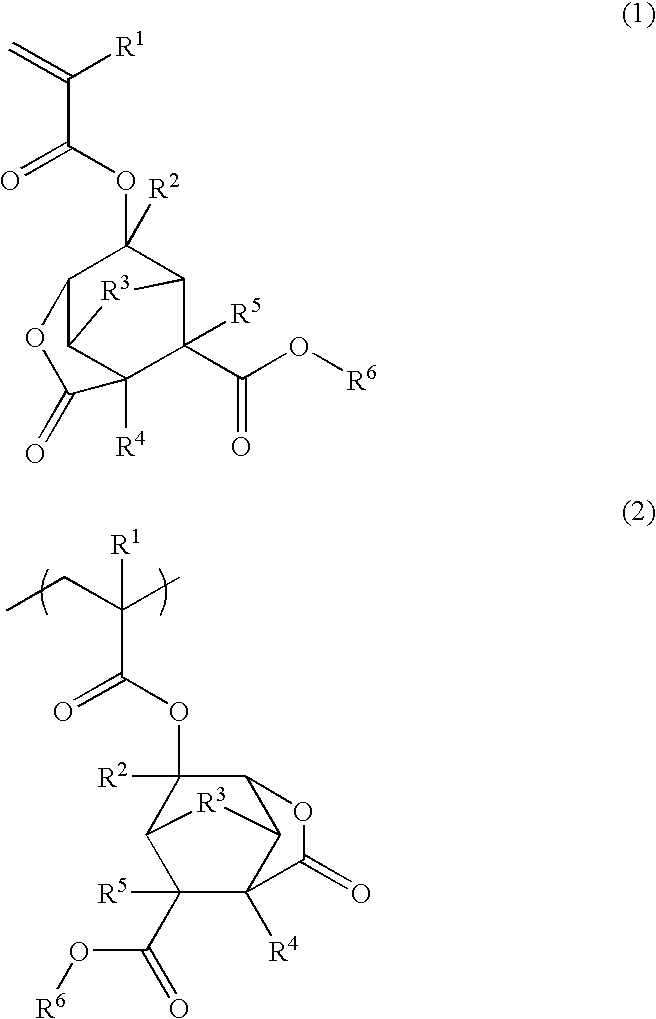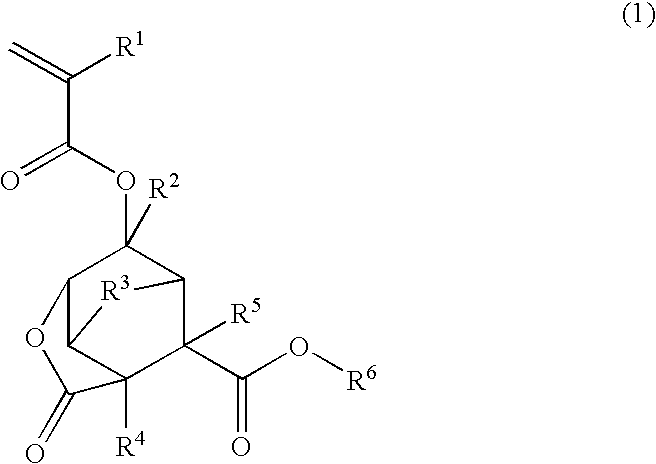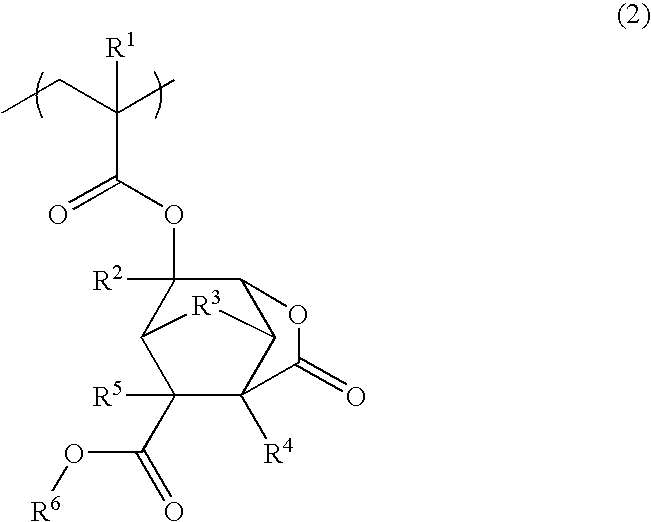Ester compound, polymer, resist composition, and patterning process
a technology of resist composition and ester compound, applied in the direction of optics, basic electric elements, electric devices, etc., can solve the problems of low etch resistance of resist, high cost of scanner, and altered optical systems, so as to improve resolution and transparency, improve etch resistance, and reduce the roughness of line edges
- Summary
- Abstract
- Description
- Claims
- Application Information
AI Technical Summary
Benefits of technology
Problems solved by technology
Method used
Image
Examples
synthesis example 1
Monomer Synthesis Example 1
Synthesis of Monomer 1
[0307]In a nitrogen stream, a 200-mL flask was charged with 16.9 g of alcohol reactant 1, shown below, and 50 g of methylene chloride and cooled in an ice bath. Then 10.2 g of (α-trifluoromethyl)acrylic chloride was added dropwise from a dropping funnel to the flask over 5 minutes. Then 6.0 g of triethylamine was added dropwise from a dropping funnel to the flask over 15 minutes. After triethylamine had been added in entirety, the flask was kept in the ice bath for reaction to occur for 2 hours. Water, 100 g, was added to the reaction system, and the organic layer was washed with a saturated sodium hydrogen carbonate solution. Thereafter, the organic layer was washed twice with 100 g of water and dried over sodium sulfate. The sodium sulfate was separated off, the solution was concentrated under reduced pressure in an evaporator. Hexane was added to the remaining oily matter. Subsequent cooling yielded a white crystalline solid, which...
polymer synthesis example 1
Synthesis of Polymer 1
[0313]A 200-ml flask was charged with 15.60 g of Monomer 1, 4.40 g of Monomer 2, shown below, and 8.58 g of toluene as a solvent. In a nitrogen atmosphere, the reactor was cooled to −70° C., followed by vacuum evacuation and nitrogen flow, which were repeated three times. The reactor was warmed up to room temperature, 0.26 g of AIBN as a polymerization initiator was added, and the reactor was heated to 60° C., whereupon reaction occurred for 24 hours. The reaction solution was poured into 300 g of n-hexane for precipitation. The resulting polymer was washed with n-hexane, separated and vacuum dried at 40° C. for 20 hours. This polymer is designated Polymer 1.
[0314]The polymer was analyzed for composition by 1H-NMR and for molecular weight by GPC, with the results being shown below. The yield was 72.5%.
[0315]
polymer synthesis example 2
Synthesis of Polymer 2
[0316]A 200-ml flask was charged with 4.01 g of Monomer 2, 16.00 g of Monomer 3, shown below, and 8.58 g of toluene as a solvent. In a nitrogen atmosphere, the reactor was cooled to −70° C., followed by vacuum evacuation and nitrogen flow, which were repeated three times. The reactor was warmed up to room temperature, 0.24 g of AIBN as a polymerization initiator was added, and the reactor was heated to 60° C., whereupon reaction occurred for 24 hours. The reaction solution was poured into 300 g of n-hexane for precipitation. The resulting polymer was washed with n-hexane, separated and vacuum dried at 40° C. for 20 hours. This polymer is designated Polymer 2.
[0317]The polymer was analyzed for composition by 1H-NMR and for molecular weight by GPC, with the results being shown below. The yield was 70.3%.
[0318]
PUM
| Property | Measurement | Unit |
|---|---|---|
| size | aaaaa | aaaaa |
| wavelength | aaaaa | aaaaa |
| refractive index | aaaaa | aaaaa |
Abstract
Description
Claims
Application Information
 Login to View More
Login to View More - R&D
- Intellectual Property
- Life Sciences
- Materials
- Tech Scout
- Unparalleled Data Quality
- Higher Quality Content
- 60% Fewer Hallucinations
Browse by: Latest US Patents, China's latest patents, Technical Efficacy Thesaurus, Application Domain, Technology Topic, Popular Technical Reports.
© 2025 PatSnap. All rights reserved.Legal|Privacy policy|Modern Slavery Act Transparency Statement|Sitemap|About US| Contact US: help@patsnap.com



